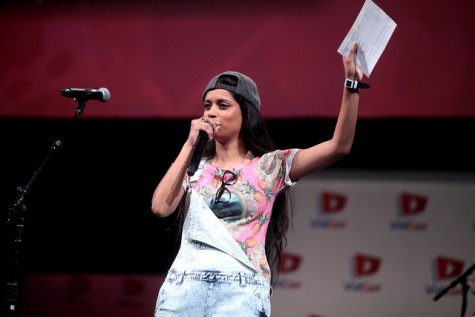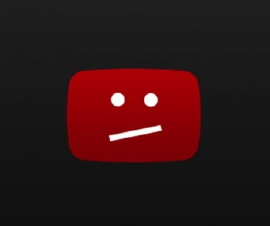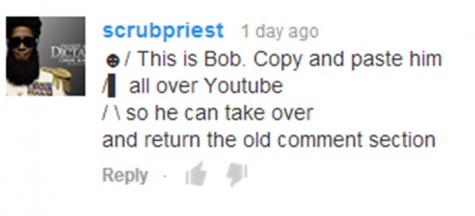YouTube: The Good, The Bad, and The Viral
March 18, 2016
YouTube, the world’s third largest site. Held within its realms are millions of videos – and every hour, three hundred more hours-worth are added on.
The site’s popularity reflects how useful it is: Looking for music? YouTube’s got you. Want to see some top ten lists? Got you. Blooper reels? Movie reviews? Fruit salad recipes? It has it all. It sounds perfect, a little safe haven away from the unsavory parts of the internet.
But is YouTube truly a flourishing digital utopia? Or is that just a front to keep the views rolling in?
YouTube Personalities
YouTube is the turning point of social media, where average people can express themselves in an unique way. YouTube personalities are internet celebrities who have become famous by making videos on YouTube; they are the core of the video-sharing website, and without them there might not be any good quality videos to watch.
You can make a living from YouTube if you’re lucky
The top five YouTubers have more subscribers than the population of Mexico. Some video bloggers make as much money as Hollywood stars. All have started out with just a couple hundred subscribers, and after years and years of dedication, they finally have a fanbase. At that that point they have created they own YouTube personalities by creating their own brands.
“When YouTube started it was more organic, like kids just posting after school. Now it’s young adults that are producing videos in a much more professional way,” YouTuber Kaitlyn Larson said. “That makes it hard for people starting out to get an audience.”
Some say that once YouTubers are officially successful and famous that they don’t post videos anymore. However, that is not true; for example, a Youtuber by the name of Bethany Mota is a fashion guru and posts at least two to three times a month. By being on the Dancing with the Stars in 2014, she has kept up on posting to her channel and maintaining that busy schedule.
YouTube personalities have many great things going for them, from having very supportive subscribers to people wanting to sponsor them.
PewDiePie makes an estimated $8.47 million annually, and according to his account he has 42,640,241 subscribers. That basically means that he has more subscribers that the population of California.
YouTube gives a chance for aspiring artists
Justin Bieber, Cody Simpson, and Austin Mahone all have something in common: they’re all YouTube sensations. By posting their musical talent online, they have made themselves famous…with the help of their viewers. Many people constantly post covers of popular songs, and sometimes their own originals, in hope of having a producer watching that believes they have talent that they could make a career out of.
Even though that doesn’t always happen, a little hope and a couple thousand subscribers could get an artist there. Beyoncé has signed 2 teens from YouTube in May of 2015 based on their cover of her songs. Chloe Bailey, 17, and Halle Bailey, 15, had signed a million dollar contract with Parkwood for five years. That was another example of YouTubers who have been successful using their own channel.
On the other hand, already famous artists use YouTube as a resource to channel their music videos, which can be viewed by anyone around the world. Overall, YouTube provides a stable path for aspiring and mainstream artists alike.
YouTube has a constant flow of new content
With a million different accounts there is always something new to watch. Some YouTubers have an uploading schedule in which they post every week or once every two weeks. Since there are many YouTubers that are constantly uploading videos, it helps the YouTuber gain more subscribers.
YouTubers create channels that focus on education
When you want to learn something new or want to a review on certain subject, there are YouTube Channels just for that. Channels like CrashCourse, Khan Academy and SciShow are great examples. CrashCourse is made up of two brothers: John Green, who uploads videos on history, and Hank Green who gives the rundown on chemistry and psychology. CrashCourse is partnered with Khan Academy which gives free education for everyone through instructional videos. CrashCourse has 4 million subscribers that focuses on history, science and economic ideas, which help students across the world.

Learn independently
Kahn Academy is a global classroom, where students can learn at their own pace; it’s a tool also used by teachers and parents. Not only is Khan Academy a website, it also has a YouTube channel that has videos uploaded almost on a daily basis. Like the website, the YouTube channel uploads content about math and science. Whenever you’re stuck on a problem for math or balancing chemical equations, channels like Kahn Academy and Crash Course can be used. YouTube provides a gateway for people who want to learn new things.
YouTube showcases different viewpoints from people around the world
YouTube is a great place for viewers to engage with travel bloggers who have great quality channels. Like the Vagabrothers, made up of Marko and Alex Ayling, who travel around the world together. As cliche as it sounds, their mission is to explore the world while documenting all their adventures as they check things off their bucket list. Those who admire watching travel vlogs could view what life is like around the world.

Superwoman aka Lilly Singh
A great example is Lilly Singh (aka Superwoman), an Indo-Canadian who is a comedian and vlogger. Lilly Singh prompted The Unicorn Island theme when she traveled around for a world tour. Singh used YouTube as a tool to show her trips around the world on her tour.
Overall, YouTube is part of many sources of media for talented people. It has become a platform for average people to create videos that show their personalities. From channels about gaming to fashion, YouTube is the perfect startup for people who want a career in acting or cinematography. Without Youtube personalities, the site would have died out a while ago, but now it has become a necessity with the wide range of resources that can be found on the site. If it’s funny videos to tutorials, YouTube provides anything you can think of, and even you could become a YouTube sensation.
The Dark Side of a Site

YouTube is held as a pinnacle of the internet’s viral media. A place where the creative are encouraged to share their products with millions. Anyone could make it big–they just need the right idea and attitude.
That’s the idea at face value.
While the site works and many enjoy it, YouTube has its fair share of issues.
The comment section of YouTube is infamous as one of the most vile parts of the internet. Open nearly any comment thread and you’ll be exposed to any number of racist, sexist, and generally degrading voices. It’s a chaotic mess: you’re just as likely to see a copy-and-pasted pictures made of slashes and dots as you are to see users debating whether or not people should be allowed basic freedoms.

In fact, YouTube popularized the flame war. Like bacteria growing in a petri dish, every day more and more violent exchanges take place on the site.
Most sites have some system of moderators and filters to prevent such disarray; YouTube doesn’t. It’s such a huge site that they seem to have given up completely, barring the ability to flag comments. Anyone can say anything, and with the anonymity the internet provides, this usually doesn’t go well. People can say any kind of vile thing they want without having to face consequences.
YouTube has always received criticism for this feature and its wildly offensive and uncontrollable content. Though they’re finally trying to take a few steps toward fixing the problem, why wasn’t it addressed sooner?
Much of the same happens with videos; while the idea of a site where you can share virtually anything sounds enticing, when put into practice there are some major issues.
While some videos will eventually be taken down for being too explicit, many get left on the site. Sure, you find your favorite musician’s newest music video among the endless seas of content, but you could also find a video of someone’s trip to the bathroom.
Even the biggest internet stars contribute to the problems on YouTube. In the genre of ‘Let’s Play’, contributors stream their playthroughs of video games and their own commentary. YouTuber Pewdiepie, a Let’s Player, boasts the most subscribes on YouTube. However, sit down to one of his videos and you may be immediately compelled to close the tab.
Most of his videos feature the same basic thing: Pewdiepie screaming over a ‘shocking’ game, usually spouting obscenities that range from swearing to full on rape jokes — the later he even made into a song.
Though he’s apologized for some of his past actions, he still has–and continues to stoke–a fandom that’s completely out of control. It’s not surprising that his fans have such notoriously bad behavior–his key demographic is 12-13 year olds. These kids are ready to defend him by any means necessary–usually by turning on caps lock and cussing out whoever has upset them.

Though some things are definitely a matter of taste, this is a highly vulnerable demographic being influenced. Things can go wrong very quickly when someone is seen only through the lens of an internet persona.
There are more than a few reports of Let’s Players attempting to extort sexual content from younger fans. Even worse, their other fans believe them when they claim that these actions were out of some sort of charity to make children feel better about themselves, or that the victims were actively trying to seduce them.
YouTube wasn’t directly at fault here, but it was a platform that gave them stardom and a fan base. When these reports get out, there was no news of any investigation nor was there any form of suspension put on the accounts. Instead, the accused are free to continue as usual.
Cases like these are the horror stories of the internet. They’re something we’ve always been warned about, but usually brushed off as the anxious ramblings of a generation that didn’t understand the issue.
Even barring the extreme cases, YouTube easily has enough questionable content to raise a few eyebrows. Currently, a new premium deal called Youtube Red has inspired much disgust. It’s like any other monthly deal — pay for a premium account, ads disappear, and you get more features.
But many users claim that the system changes not only hurt content creators, but extort those who just want to be able to listen to music on YouTube while using other apps. Add on the cost of $9.99 per month, and the worth just spirals downward.
So, should YouTube be boycotted? Of course not, as it still offers the internet a lot. But it could definitely use a few touch-ups to keep things sane. Its users and site alike could benefit from some simple ideas being put into play. YouTube owes its continued popularity to its fans, and it’s not that much to ask that they’re given the best experience possible.

